Here is a brief guide to help you identify the most popular plants in your courtyard and in the wild around San Miguel, and their impact on our history, culture and your garden.
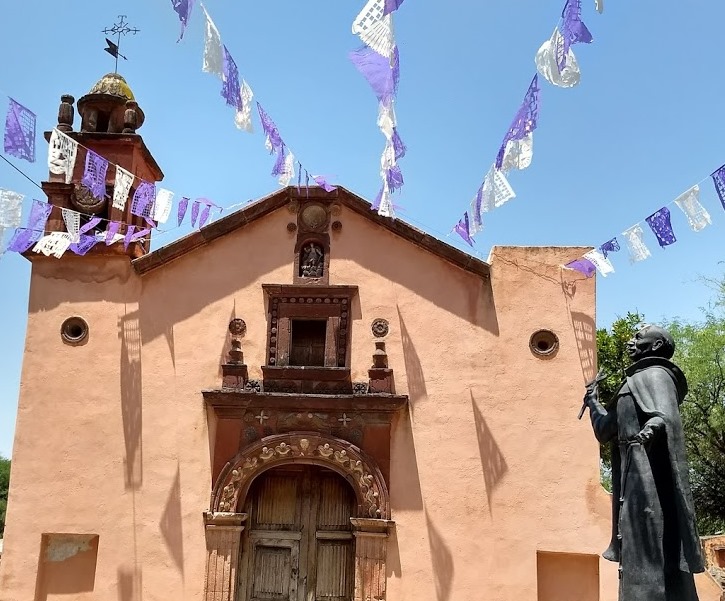
In your garden, as in life, I recommend falling in love with natives. There’s a reason they do well here. For example, Fuchsia fascinates me and grows profusely all over Ireland. Each year’s at the Candelaria Plant Sale I buy some Fuchsia and treat it with much love and respect until one day it will simply realize it’s not in cloudy, rainy, Celtic Ireland and kills itself. You’ll never find a hardly cactus behaving that way!

If you’re lucky enough to have a tree in garden it will likely be an imported Peruvian Pepper Tree featuring the tasty red or pink pepper seeds. They grow big and weak, so best to not picnic under one as the branches frequently tumble off for no apparent reason.
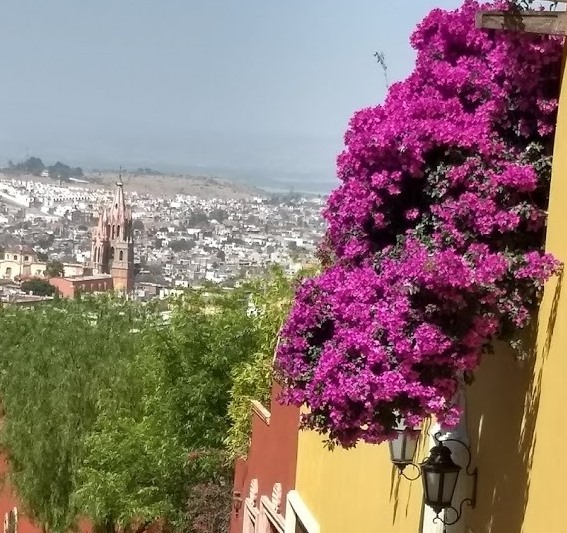
Australian Pines flourish here as do palms. The Fan Palm is a tall native tree with an unbranched trunk. The leaf blades are fan shaded while old leaves form a skirt below the top of the tree insulating the trunk from weather extremes. The Fan Palm blows in the wind just outside the Parroquia.
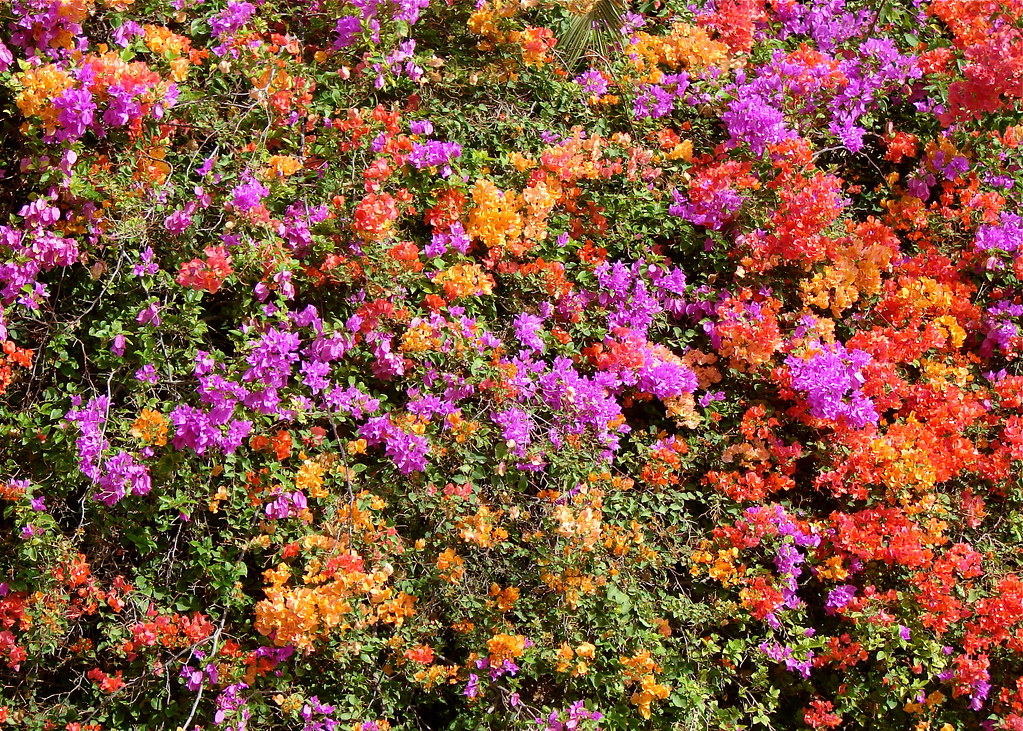
In the jardin, and most public parks, is the easy to trim Indian Laurel. Often misidentified as Breadnut, the trees enjoy being hollowed out to keep birds from nesting and adding their excrement’s damage to the nearby church’s façade.

Jacarandas bloom around Easter in their purple glory all over the town giving the city an otherworldly glow. Not a favorite of allergy sufferers.

As for bushes, Oleander abounds with stalky branches and shiny leaves featuring drought-resistant flowers in a wide array of colors. Careful with pets though, as the plant is poisonous.
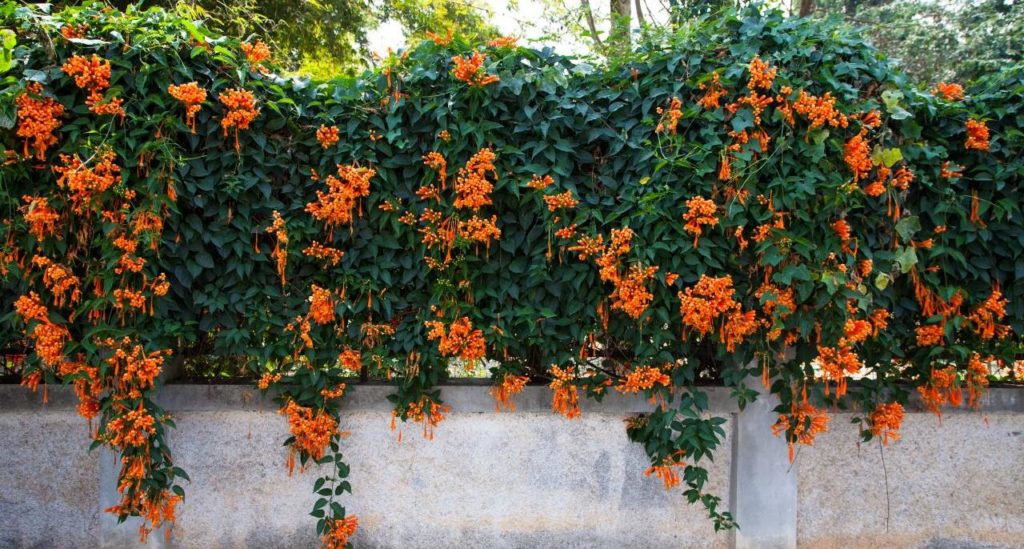
Also poisonous is the bushy poinsettia, called Christmas Eve in Spanish as legend states back in the 1500s Juan and Maria were poor children living in the countryside. Come Christmas Eve they wanted to present Baby Jesus with a gift in the church but had no money. Just then an angel appears instructing them to present some weeds to Baby Jesus. They are aghast but smart enough to not argue with an angel.
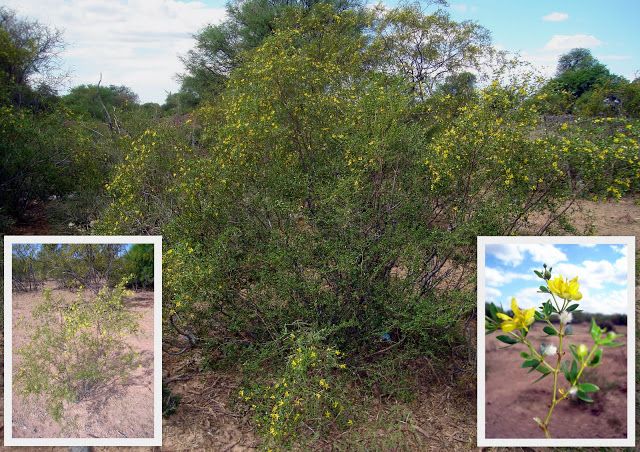
Once in church and said weeds were placed by Baby Jesus they miraculously transform into the poinsettia. The little song books used during posadas often feature Juan, Maria and the flower on the cover.
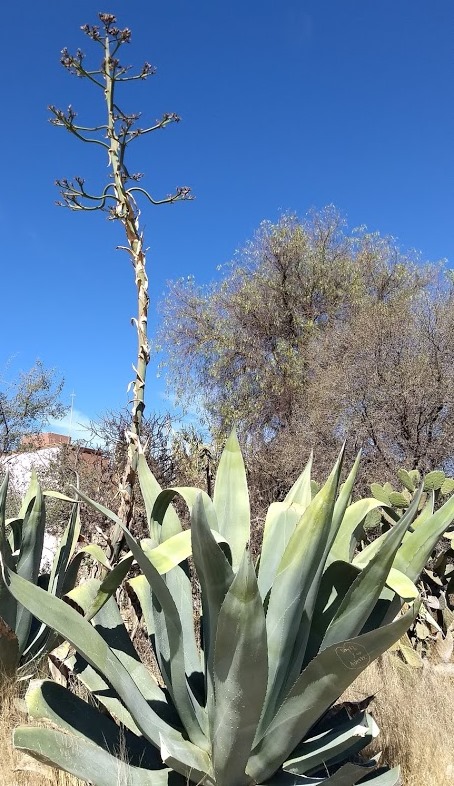
The first American ambassador to Mexico was Joel Poinsett. He is remembered for having brought the red flowering plant back to the US in 1825 that became a Christmas time favorite and named for him, poinsettia. Poinsettias remain the highest selling potted flowering plant.
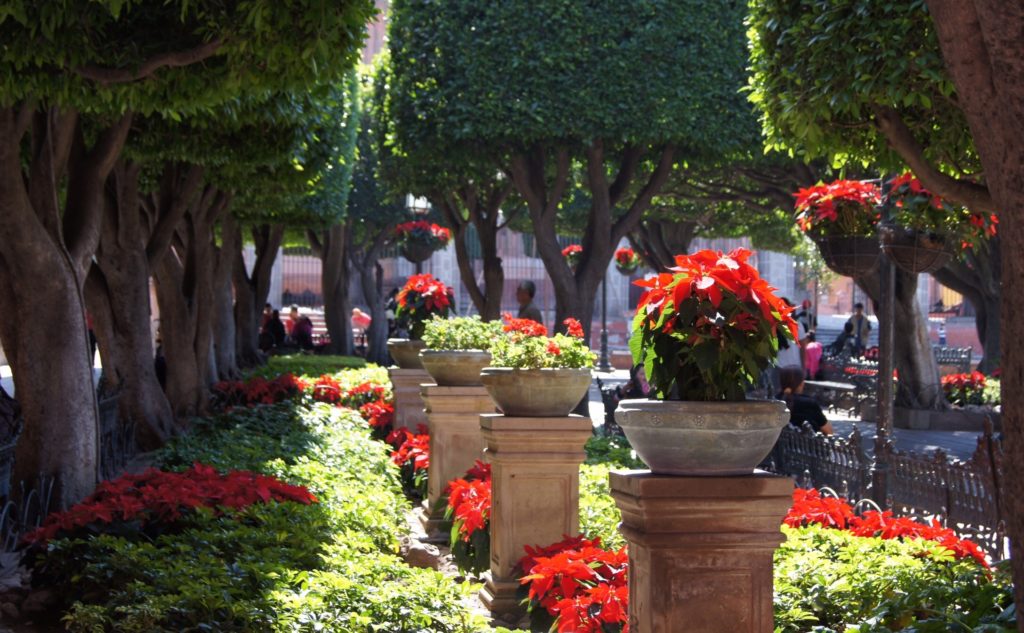
Lantana is my personal favorite flower featuring small clusters of bright blooms on every shrub. Tolerant of drought and unappealing to be eaten by animals, the wide variety of colors make Lanatana a great ornamental that will grow in pots but does far better in the ground itself.
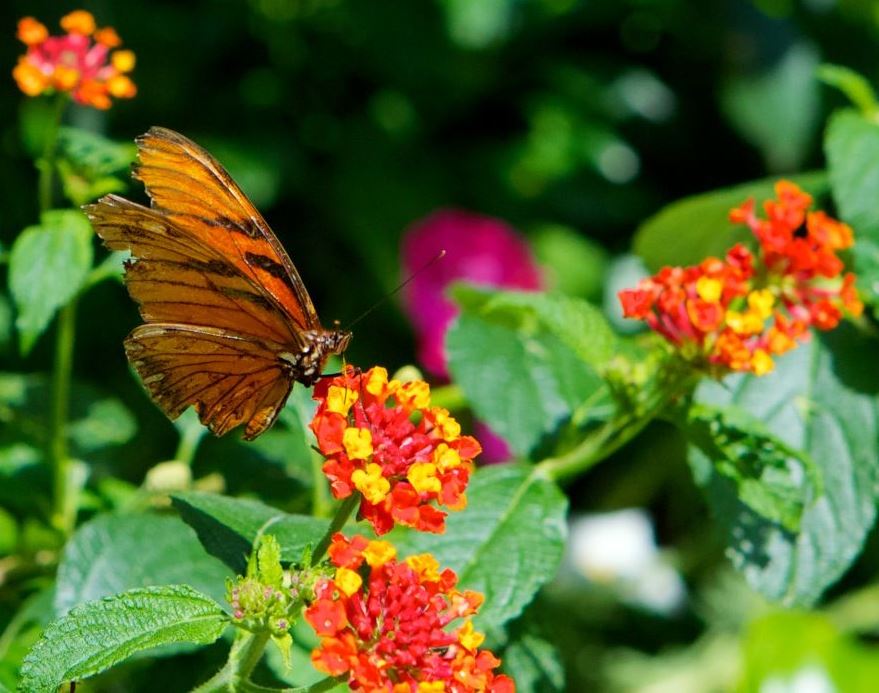
Bougainvillea is another lovely drought resistant vine in spectacular colors. Prickly, so not good around children or pets, but easy to care for and omnipresent much like Canary Eyes, a sturdy vine from Africa that blooms year round orange, red, white and the signature, yellow. Oddly, the Canary Eyes’ vines instinctively know to grow around the Guadalupe image on front of my house as I’ve never trimmed them.

Around the house you can never go wrong with a succulent which sounds like a vampire but really is a water retaining plant. Once the rains start a succulent will bloom gorgeous flowers in a variety of colors and settles nicely in a pot.
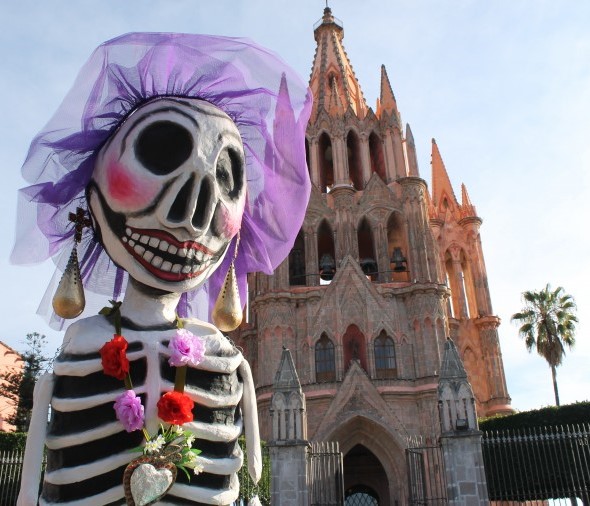
Venturing farther afield (pun intended) in the countryside the most common trees are Huizaches and Mesquites. Huizache are small trees and shrubs featuring inconspicuous flowers blooming earlier than the always nearby Mesquite trees which are easy to identify as they are taller. Mesquite is a great wood for furniture and doors around town as it is quite durable. Huizache branches are collected and sold for firewood while ever griller knows the pleasant aroma of mesquite.
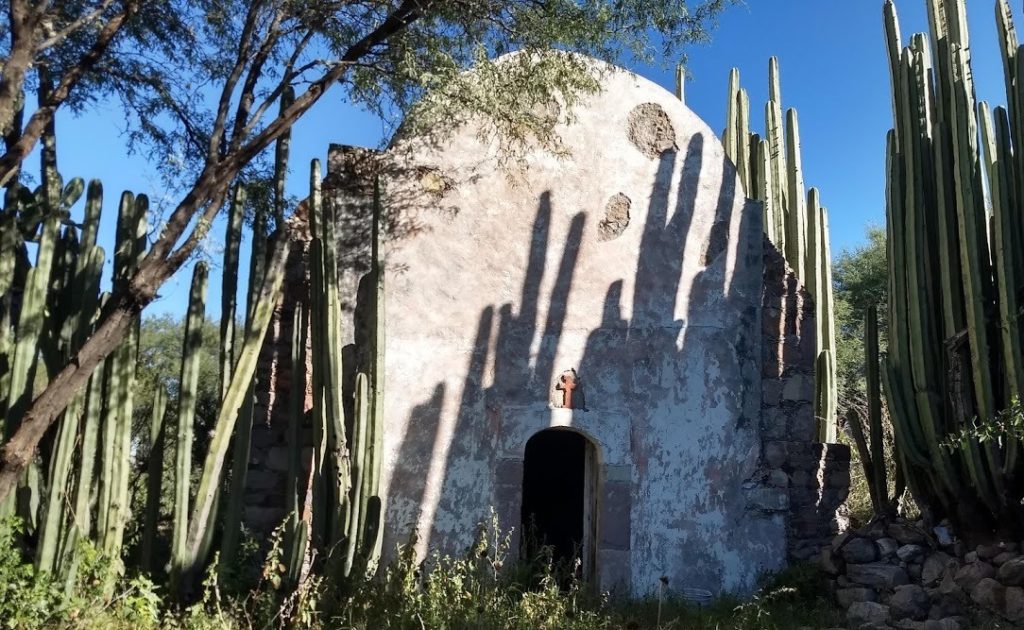
Despite the sharp spines, Mesquite trees and Huizache shrubs are often pruned by foraging cattle or goats.
Copal is a small shrub with bark that peels in papery strips with age. Copal is used in religious ceremonies being the parent plant to frankincense and myrrh. Copal is featured in indigenous dancing/prayers as the aroma is believed to bring back ancestors.
The Eucalyptus tree is another Australian import often seen around the lake with bark that peels leaving the trunks smooth. Highly aromatic, a Eucalptus trees grows rapidly.
Olive Trees and grape vines do well here in town but were illegal to grow during the Inquisition (1520 to 1820) to protect Spain’s domestic production. Grapes and olives are immortalized in wine and oils.
Jarilla is a native shrub found where the oak forest meets the desert. Jarillas’ bright yellow heads are produced in vast profusion in and around San Miguel.
Also profuse are Cacti absorbing moisture from even the slightest of rain. Once the oak forests were destroyed by the Spanish, grazing cattle spread the cultivation of cacti. Cacti are used for food, hair coloring, paper, building materials, healthcare and much else. When visiting the chapel in San Miguel Viejo note what lies above St. Michael’s image at the top of the chapel, a cactus. Cacti were considered the greatest gift from the gods to the indigenous, more valuable than the new faith St. Michael represented.
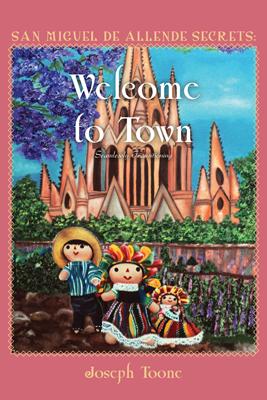
Organos are cacti shaped like a church organ, also called Poor Man’s Fencing as the plant can be cut and replanted in a line forming a fence. For those in the country a fence is important to keep squatters off your land and, later, being able to claim it as their own as in Mexico, residency is given importance over whose name is on the title.
Nopals are my favorite cacti as eaten daily, it does wonders for your blood pressure and cholesterol. Uncooked it has the texture of snot, but once fried tastes like a green bean.
The Century Plant (also called Agave and Maguey) actually blooms in far less time with a striking center beam that pushes off seeds as the mother plant dies. I frequently see foreigners cut down the center beam, spray paint it silver and use over the holidays like a Charlie Brown Christmas tree. Agave is from the Greek word for marvelous in reference to the pulque and tequila booze it produces.
Lichen is a fungus that only grows in really clean air found on rocks, trees and church walls. The green-gray color is not attractive, per se, but a reminder you are in really pollution-free area.
I’m not a fan of all plants as some are rather evil. For example the Orange Trumpet Vine is a beautiful plague that like kudzu in the US South will swallow an entire tree eventually killing the host. The Orange Trumpet has spread like wildfire in recent years throughout the state.
Virginia Creeper, as the creepy name suggests, is another plague. This plant can be totally ignored and the bright red berries are attractive. Don’t encourage unless you want a lot of them and nothing else as they’ll kill all their plant neighbors. Samples thrive in the hanging pots at the mall.
Ball Moss has nothing to do with Lucy Ball, but rather is ball like gray puffs you see all over town on trees and electrical wires. Another parasite that will kill the host (well, not if a telephone pole). Related to both the pineapple and Spanish Moss (used to decorate nativities), Ball Moss is far more deadly and needs to be removed if you want the tree to survive.
These are the most common plants in and around town. Enjoy them while impressing your pals with your horticultural, and culture in general, expertise! Or channel the acerbic wit of Dorothy Parker who chimed “You can lead a whore to culture, but you can’t make her think.”

by Joseph Toone
- TripAdvisor’s top tour guide in San Miguel de Allende with History and Culture Walking Tours and Joseph Toone Tours.
- Amazon’s best selling author of the San Miguel de Allende’s Secrets book series on history, holidays, tours and living in San Mi
